#Augusto Mora
Explore tagged Tumblr posts
Text
Illegal Cargo is a haunting graphic novel exploring immigration
Illegal Cargo is a haunting graphic novel exploring immigration #comics #comicbooks #graphicnovel
No one is illegal. Augusto Mora explores immigration in his haunting graphic novel Illegal Cargo from Black Panel Press. This graphic novel explores the topic through a story of a father leaving everything behind to find his daughter. Story: Augusto MoraArt: Augusto Mora Get your copy now! To find a comic shop near you, visit http://www.comicshoplocator.com or call 1-888-comicbook or digitally…
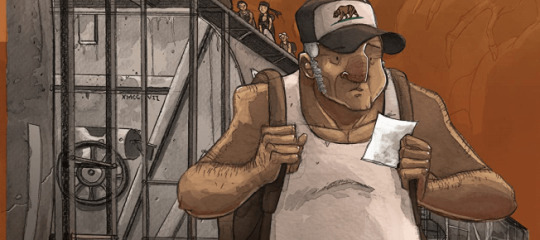
View On WordPress
0 notes
Text
Dead By Daylight
The Artist: Revised Backstory
While I like Carmina Mora (The Artist)’s design and theme, her backstory leaves a bit to be desired. Her relationship with the Entity is a departure from its usual MO as an opportunistic corruptor. It also brings in elements that, by the very nature of the game, are basically doomed to go nowhere.
More importantly, there is no need to introduce an evil corporation or sinister cult to mutilate and kill an anti-authoritarian Chilean artist. The Pinochet regime arrested, tortured, and ‘disappeared’ those sorts of people for almost two decades, with famous singer Victor Jara and many others suffering tortures very similar to what was done to Carmina. It was the perfect opportunity to acknowledge and publicize a tragedy that is often ignored or glossed over (because the United States backed Pinochet’s coup and Britain supported him for his help in the Falklands War), as well as show that sometimes the things real, ordinary humans do to each other are more terrifying than any horror monster.
So here’s an alternative backstory for our dear Artist.
-
Content warning: torture, suicide, and death
-
Carmina Mora came from a broken home. Her father was an abusive drunk, and her mother abandoned them shortly after the birth of Carmina’s younger brother Matias. Her father was quick to blame Carmina and Matias for their mother’s disappearance, though Carmina did her best to shield Matias from his abuse. Due to her father’s negligence Carmina was Matias’ only caretaker. It was a task she was far too young for, but she loved her brother with all her heart. Besides Matias, the only other joy in Carmina’s miserable home were the art supplies her mother had left behind. No one ever showed her how to draw or paint, but splashing and scribbling colors onto a page or canvas proved a useful outlet for her emotions and helped her feel close to her missing mother. Carmina could not say she was happy, but with Matias and her art she was able to find peace.
It did not last.
Carmina and Matias were playing along the bank of a nearby river when a local policeman arrived, accusing them of truancy and demanding to know where their parents were. Carmina attempted to explain, and by the time the officer had left Matias was nowhere to be seen. Carmina searched frantically and was horrified to see his limp body being slowly swept downstream. In her brief distraction, Matias had wandered out of sight, fallen into the river, and drowned. The aftermath of Matias’ death was a whirlwind of pain, grief, and guilt. Carmina blamed herself for his death. So did her father, though nothing he shouted at her could cut so deeply as what she told herself when she was alone.
In her spiral of grief, Carmina eventually walked onto the bridge over the same river that had claimed Matias. The location was extremely popular for suicides, earning the name “Death Leap”, and Carmina intended to be its next victim. Convinced she was responsible for her brother’s death, a belief her father confirmed every night with his screams and drunken blows, Carmina could no longer stand the endless guild that clawed like talons at her gut. Desperate for any kind of release, she hurled herself off the bridge to join her brother in death.
What Carmina did not know was the riverbank was also frequented by a local birdwatcher, who made a hobby of studying and sketching the birds that nested nearby. When he came to the river as he always did, he immediately noticed a group of crows circling over something on the riverbank. He was astonished, since crows are not native to Chile, so he immediately set out to investigate. He realized the birds were circling the battered body of a girl: Carmina, who had somehow survived the fall into the river and washed up on the bank.
As she recovered in a local hospital, Carmina became fascinated with the crows that had inadvertently helped save her. She returned again and again to the bank where she had washed up, bringing them food and watching them. She was often joined by the birdwatcher, and he explained that the crows were likely partially domesticated. Crows are extremely intelligent, capable of completing complex tasks for various rewards, and probably came to Chile following someone who once used to feed them. Now that she was feeding them, it seemed that they had bonded to her instead. He taught her to sketch them with charcoal, turning her love of art from a hobby into a passion. Art became an outlet for her guilt and grief, and while her drunken father still screamed she learned to ignore his words.
Carmina was soon old enough to abandon her abusive home and was almost immediately swept up in the growing Nueva Cancion (New Song) movement. Her comrades in the Nueva Cancion movement showed her the joys of songs and poetry. They supplied her with books, something that had been in short supply where she’d grown up, and Carmina greedily devoured every single one. She would later joke that her dream home would be a nest in a tall tower, surrounded by shelves upon shelves of books. Carmina soon began to write instead of merely read. Her poems were quite popular, but her primary focus was always her art. Her signature inky black style, inspired by the glossy black feathers of her crows, was very distinctive and she was a mainstay of the Chilean art scene in the late 1960s and early 1970s. As she lay dying on the bank of the river, her final vision had been of black wings and avian eyes, so abstract crows were a reoccurring theme she used to represent death. Her crows followed her everywhere and Carmina incorporated them into her art, making the act of creation a performance that included elaborate costumes and her ever-present crows.
Like many artists at the time, Carmina frequently used her art to criticize government corruption and expose injustice. Pushback and threats from authorities merely emboldened her. She openly vandalized the walls of government buildings, police stations, courtrooms, and monuments in her usual performative style, her shining black paint intended to reflect the darkness and corruption she felt hid behind their polished facades. These acts of defiance would soon have disastrous consequences.
When Pinochet took power in 1973 through a violent coup, he immediately targeted anyone he perceived as a threat, particularly political opponents, leftists, and “subversives”. Within two weeks 7000 prisoners were being held at the National Stadium alone, with many more held at other locations or executed on the spot.
Carmina herself was arrested mid-performance and dragged to a nearby monastery in the Atacama Desert, a monastery the regime had seized to use as a detention center. Prisoners were physically and psychologically tortured: starved, beaten, humiliated, denied sleep for days, and electrocuted, among many other horrors. The bell tower in particular was a favorite location for these torments, as it allowed the screams of the victims to echo through the entire monastery and surrounding desert as a potent psychological weapon. Prisoners were hung from its beams and left to dangle while they were beaten, burned, and whipped. Weights were often tied to their limbs, causing their bodies to agonizingly stretch until their arms and legs popped from their sockets. Some were even hung by their necks, left to slowly strangle only to be cut down at the last moment so they could be hung all over again.
Those who died from their tortures or were executed were also strung up in the bell tower, attracting flocks of carrion birds that tore at the living and dead alike. The constant presence of these birds caused the guards to begin mockingly referring to it as the Eyrie.
Carmina’s fame immediately singled her out, and in addition to the normal torments the guards mockingly demanded she paint her fellow prisoners being tortured. They refused to give her actual paint, instead forcing her to use blood, bile, and filth. Under threat of death and torture, she complied with their demands. Carmina crafting a number of abstract paintings that, despite their crude nature, still managed to convey the raw pain, sorrow, and despair of the victims in a manner that was almost palpable. The guards hung these paintings in her tiny prison cell to further mock her, something Carmina used to her advantage. She scribbled poetry on the backs of the paintings, sometimes in her own blood, then tore them into small pieces and slid them through the bars in her window along with some of the meager food she was allowed. Carmina was already starving, so to sacrifice even crumbs was a painful blow, but she soon reaped the rewards.
Her ever-present crows had followed Carmina even to the remote prison, and they immediately swooped down to consume her offerings. She’d often given them scraps of cloth or paper for their nests in the past, so they also snatched up her torn paintings and carried them away. Carmina’s friends and compatriots were familiar with her signature crows and where they nested. Those lucky enough to have escaped the initial purge soon spotted the new additions to these nests and realized Carmina was using her crows to smuggle messages out. Her paintings revealed the true horrors of the regime’s torture camps and were swiftly passed to anti-government groups throughout Chile.
Though Carmina suffered as much as any other prisoner at the cruel hands of her captors and often suffered more than others due to her fame, her guilt at seeing her friends and comrades suffer eclipsed any physical torment. In her smuggled poetry she compared her situation to being back on the bank of the river, watching her brother drown over and over and being unable to save him. As days turned to weeks and weeks turned to months, this guilt began to take a toll on Carmina’s mind.
Her artwork became more savage, and her poems took on darker and darker tones. In one, she wrote about wishing to drive the dull palette blade she’d been given for her “art” into a fellow prisoner’s eye and leaving him for the birds. The poem expressed a longing for all those around her, prisoner and guard alike, to die so that the crows would be her only company. Their dispassionate black eyes held no judgement, and though they screamed at least their screams did not fill her with guilt.
She remained defiant despite her fraying sanity, until at last her schemes were exposed. In a desperate gamble, several of Carmina’s most shocking poems and paintings were released to the public. It was hoped that the visceral evidence of what the regime was doing would spark outrage around the world, and the resulting pressure would force Pinochet to ease his grip. The attempt failed. Pinochet had powerful allies, allies who had helped him take power and had a vested interest in keeping him there. Carmina’s artwork was dismissed as false propaganda, and Carmina herself was painted as a deranged anarchist and communist. The efforts to expose the crimes of Pinochet and his regime only managed to stir up a handful of minor protests and diplomatic rebukes, which were easily ignored.
As the world turned its back on the suffering of Chile and its people, it became clear that the release of Carmina’s art had done nothing but seal her fate. Once it was revealed that she’d somehow been smuggling subversive materials to anti-government groups, retribution was swift. The guards dragged her out of her cell and hacked off her hands with machetes in front of the other prisoners, demanding to know how she would paint her pictures or scribble her poems now? She told them she would paint with her bloody stumps and speak her poems aloud every minute of every day. In response the guards cut out her tongue and threw her back into her cell to ‘paint her pictures’.
The final account of Carmina Mora comes from a prisoner who was in the process of being transferred to another facility. He was dragged past Carmina’s cell shortly after her dismemberment, and claimed he saw her there. Blood was trickling from her mouth, but her eyes were filled with madness as she dragged her raw sumps across the rough concrete wall, painting her final masterpiece even as she bled to death.
She was never seen again.
The legacy of the prison facility where Carmina was held is a confusing one. Shortly after Carmina’s mutilation, contact with the facility was lost due to a severe earthquake that knocked out electrical and phone lines in the area. The Atacama Desert is what is known as a ‘fog desert’: the majority of its moisture comes not from rain but from fogs rolling off the nearby Andes Mountains. Extreme banks of fog were not uncommon at the monastery-turned-prison, it was the primary reason the monks had been able to thrive in what is otherwise one of the driest deserts in the world, but when the fog finally cleared almost a week after the earthquake the facility was completely deserted. There were no signs of the prisoners or guards, and all of their equipment had been left behind. The last painting of Carmina Mora was discovered covering the walls of her old cell: spider-like limbs, reeking of malice and covered in sadistic barbs and blades, curling down to menace a single flickering flame of hope.
Government officials stated afterward that the facility was shut down because its location made resupply difficult. The official release claimed that the guards and prisoners were all accounted for and had merely been shuffled off to different locations. Certain local sources dispute this, pointing out that no convoys of guards or prisoners were ever spotted on the road leading from the monastery and questioning why so much expensive equipment was just abandoned if it was a planned relocation. Some claim that the official story is merely a coverup. They instead maintain that a resistance cell attacked the facility, killing the guards and freeing the prisoners. No evidence has ever surfaced to support this alternative claim.
While many of the poems Carmina Mora wrote in prison were copied down or memorized and thus survived, the same cannot be said of her artwork. They were made on scavenged paper with vile substitutes that did not last like traditional ink or paint. They were torn apart to smuggle them out of the prison, picked at by birds, and the surviving shreds had to be stored in harsh environments to hide them from the regime’s agents. The government destroyed any scraps they could find, and those that escaped soon disintegrated. The few scraps of Carmina’s prison paintings that survived were eagerly sought by those fascinated by the macabre and grotesque and have long-since vanished into private collections. Attempts by Chilean groups to recover and memorialize them have met with no success.
Carmina’s final masterpiece has also been lost. The earthquake that struck the monastery did serious damage to its foundations, and when a second earthquake hit a year later it completely collapsed the majority of the monastery. This included the cell where Carmina’s final painting was located. Chile remained in a grip of terror due to the ongoing efforts of the regime, so after the initial brief exploration no one dared venture into the abandoned site for fear that they too would be arrested. When the monastery collapsed Carmina’s painting was destroyed along with it, and the only description of the painting comes from one of the anonymous individuals who first found the site after its abandonment.
Today only the infamous “Eyrie” remains, along with the sprawling graveyard that surrounded the monastery. Many of these graves and crypts are from long before the regime’s occupation, used by the monks to bury their fellows or residents of nearby towns, but a large number of crude or unmarked graves have been discovered containing the bones of those who died in the prison. Its remote location and the sheer number of bodies interred around it gave the monastery-turned-prison a bleak new nickname: the Forsaken Boneyard.
An official effort was made to disinter the graves so the remains could be identified and sent back to their families, but the effort was plagued by bad weather, yet another earthquake, and a bloody accident that claimed the lives of two workers. These disasters eventually forced the identification effort to be called off completely. A movement to remake the site into a memorial was similarly abandoned due to the monastery’s remote location and the risk that further earthquakes might collapse what little remained.
Like many victims of the Pinochet regime’s campaign of terror, Carmina Mora’s remains were never found.
#dead by daylight#the artist#carmina mora#dbd the artist#alternative lore#chile#augusto pinochet#operation condor
4 notes
·
View notes
Text
21 novembre … ricordiamo …
21 novembre … ricordiamo … #semprevivineiricordi #nomidaricordare #personaggiimportanti #perfettamentechic
2023: Bettina Moissi, attrice tedesca. Figlia dell’attore austriaco di origini italo-albanesi Alessandro Moissi e dell’attrice Herta Hambach. Intraprese la carriera di attrice, divenendo famosa in particolare per aver recitato sul grande schermo in diversi film. Sposò nel 1959 Heinz Berggruen, collezionista d’arte, gallerista, mecenate e giornalista tedesco, da cui ebbe due figli: Nicolas…
#21 novembre#Antônio Augusto Moraes Liberato#Beppe Modenese#Bettina Moissi#Bill Bixby#Carlo Micheluzzi#David Bruce Cassidy#David Cassidy#Giuseppe Locchi#Giuseppe Modenese#Gugu Liberato#Laila Morad#Laila Mourad#Layla Mourad#Lee Patrick#Leila Mourad#Leyla Mourad#Maurizio Arena#Maurizio Di Lorenzo#Michael J. Pollard#Michael John Pollack#Morti 21 novembre#Pierre Blanchar#Pino Locchi#Quentin Crisp#Richard Carlson#Wilfred Bailey Everett Bixby II
0 notes
Text
Coreiras dançando tango
Hamilton de Holanda e Mestrinho no palco do Festival Ilha Sinfônica, ontem (29) – foto: divulgação Os telões que ladeavam o palco do Ilha Sinfônica mostraram: coreiras do Tambor de Crioula de Mestre Felipe dançando tango, enquanto Hamilton de Holanda (bandolim) e Mestrinho (sanfona) tocavam “Libertango” (Astor Piazzolla). A imagem sintetiza a proposta do festival, que juntou música clássica e…

View On WordPress
#adriana bosaipo#astor piazzolla#baden powell#bumba meu boi#Bumba Meu Boi Unidos de Santa Fé#Canto da Praya#césar nascimento#celso borges#djavan#donato alves#Emanuel Jesus#erasmo dibell#festival#gilberto gil#hamilton de holanda#Ilha Sinfônica#jairo moraes#José Abdon#José Augusto#josias sobrinho#música#música clássica#música popular#Mestrinho#nosly#Orquestra Ilha Sinfônica#Paulo Sérgio Valle#Pedro Raimundo#Quarteto de Cordas da Orquestra Ouro Preto#reggae
0 notes
Text
tinha alguma coisa na água brasileira em 1990
#eles reincarnaram o vinicius de moraes reviveram o augusto dos anjos e beijaram a boca de machado de assis#stop sophia
0 notes
Text
If Augusto wants to call Maura somehow especially tenderly, he calls her marasca mia (my cherry, implying my little cherry). Marasca is a sort of wild cherries with small sweet-sour berries that are perfect for creating cherry liqueur. Despite it would be more linguistically logical to associate Maura with blackberry (which is la mora in Italian), for Augusto Marasca cherries have a very special meaning, nostalgic even. As I wrote in his story, his family owned a small vineyard, but there also were a few Marasca cherry trees that usually start to blossom in April, just the month when Maura was born.
In the distant future Mau will also call her son Niccolò nocciolino mio (my little nut) sometimes, but mostly she perceives it as a cute family tradition that she took from her father.

Picture is taken from here
#just a quick thought not to forget#heldig writings#lackadaisy#lackadaisy oc#maura venza oc#augusto venza oc#niccolò rickaby oc#maura venza#augusto venza#niccolò rickaby#lackadaisy ocs#lackadaisyoc#lackadaisyocs
19 notes
·
View notes
Text
Brazil police arrest suspects in plot to kill president Lula, top officials
Arrests are part of ongoing investigation into a 2022 coup attempt, which increases pressure on former President Bolsonaro and his closest allies

Brazil’s Federal Police arrested on Tuesday (19) four military officers and a federal police agent suspected of being involved in a plot to assassinate President Lula, Vice President Geraldo Alckmin, and Supreme Court Justice Alexandre de Moraes. The arrests are part of an ongoing investigation into a 2022 coup attempt, which has increased pressure on former President Jair Bolsonaro and his closest allies.
The Federal Police is expected to conclude the investigation and submit its final report to the Supreme Court next week. Mr. Bolsonaro, along with key figures from his administration, including generals Walter Braga Netto and Augusto Heleno, is likely to face charges.
The operation was authorized by Justice Moraes, the case’s rapporteur at the Supreme Court. Those arrested include retired General Mario Fernandes, Lieutenant Colonels Hélio Ferreira Lima, Rafael Martins de Oliveira, and Rodrigo Bezerra de Azevedo, all part of a specialized Army group that handles sensitive operations. Federal Police agent Wladimir Matos Soares was also among those detained.
In his decision, Justice Moraes wrote that there were “robust and extremely serious indications” against the suspects, who allegedly employed “military and terrorist techniques” in their plans to assassinate the officials beginning in November 2022, following Mr. Bolsonaro’s electoral defeat. At that time, Mr. Moraes was the president of Brazil’s Superior Electoral Court.
Continue reading.
#brazil#brazilian politics#politics#democracy#luiz inacio lula da silva#geraldo alckmin#alexandre de moraes#Mario Fernandes#Helio Ferreira Lima#Rafael Martins de Oliveira#Rodrigo Bezerra de Azevedo#image description in alt#mod nise da silveira
10 notes
·
View notes
Text

Ser feliz é não ter medo dos próprios sentimentos.
É ter coragem para ouvir um “não“.
Ser feliz é deixar viver a criança livre,
alegre e simples que mora dentro e cada um de nós.
É ter maturidade para falar “eu errei“.
É ter ousadia para dizer “me perdoe“.
É ter sensibilidade para expressar “eu preciso de você“.
É ter capacidade de dizer “eu te amo“.
Jamais desista de si mesmo.
Jamais desista das pessoas que você ama.
Jamais desista de ser feliz, pois a vida
é um espetáculo imperdível...
E tenha certeza que você é um ser humano especial
para todas as pessoas que te gosta, respeita e quer
te ver sempre bem...
🖊️Augusto Cury
65 notes
·
View notes
Text
Vês! Ninguém assistiu ao formidável Enterro de sua última quimera. Somente a Ingratidão – esta pantera – Foi tua companheira inseparável!
Acostuma-te à lama que te espera! O homem, que, nesta terra miserável, Mora, entre feras, sente inevitável Necessidade de também ser fera.
Toma um fósforo. Acende teu cigarro! O beijo, amigo, é a véspera do escarro, A mão que afaga é a mesma que apedreja.
Se alguém causa inda pena a tua chaga, Apedreja essa mão vil que te afaga, Escarra nessa boca que te beija!
Versos íntimos [Augusto dos Anjos]
#augusto dos anjos#versos íntimos#poesia brasileira#poem#parnasiano#parnasianismo#pré-modernismo#naturalismo#simbolismo
4 notes
·
View notes
Text
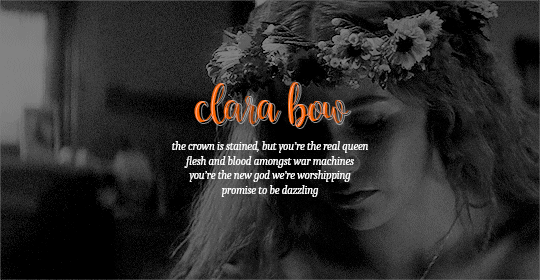


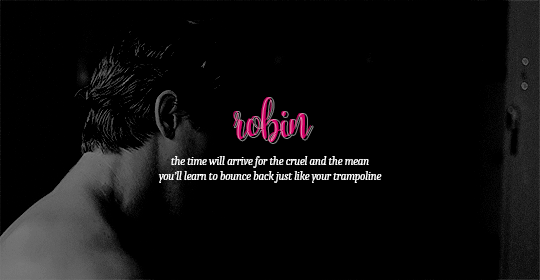




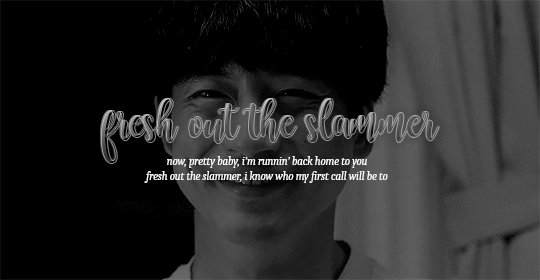


SANTA GUADALUPE CHARACTERS + ‘THE TORTURED POETS DEPARTMENT’ LYRICS
jessica leão: clara bow augusto porto dias: the alchemy ana júlia sassaki moraes: guilty as sin? tiago mcgowan: robin nicolas marino: i look in people’s windows olivia carrilho: i can do it with a broken heart eduardo wang: i hate it here jennifer de silva: cassandra guilherme sassaki moraes: fresh out the slammer ida pasquim: florida!!! diana brisbane: the albatross
#character: ana júlia sassaki moraes.#dynamic: aurameres & (triste) companhia.#santa guadalupe.#mine.#lupets.
5 notes
·
View notes
Text
[VÍDEO] Moraes diz que STF vive momento socialista: ‘Não sou o único comunista na Corte’
Foto: Antonio Augusto / STF O ministro do Supremo Tribunal Federal (STF) Alexandre de Moraes mencionou um “momento socialista” do plenário. O episódio ocorreu nesta quarta-feira (12) durante o julgamento em que a Corte decidiu que as contas do FGTS não podem ser corrigidas somente pela Taxa Referencial, com valor próximo de zero. “Aproveitando até, ministro Fachin, este momento socialista do…

View On WordPress
5 notes
·
View notes
Text
A adoração é mais que cantar uma canção falando de Deus ou de lhe dirigir palavras. A verdadeira adoração tem de fluir do espírito, na mais profunda entrega a Deus. Falando com a mulher samaritana, no poço de Jacó, Jesus disse que “vem a hora e já chegou, em que os verdadeiros adoradores adorarão o Pai em espírito e em verdade; porque são estes que o Pai procura para seus adoradores. Deus é espírito; e importa que os seus adoradores o adorem em espírito e em verdade” (João 4.23-24). E foi adorando a Deus com todo o seu ser que a cantora e compositora Kelly S. Rodrigues compôs “Santo Deus”, um lançamento, independente, com assessoria de imprensa da Frutificai Produções. Ela conta que compor esta canção, uma música de profunda adoração e entrega ao Senhor, foi uma forte experiência durante um momento do seu devocional: “Ela fala da revelação da verdadeira identidade de Jesus, é o reconhecimento da soberania e majestade de Cristo”. “Santo Deus” é o quarto lançamento do projeto “Adoração em Chamas Vol 1: O som dos incendiados”. Todas as músicas desse trabalho são composições autorais da cantora. Ela é uma música totalmente Cristocêntrica, pois Jesus é o centro nesta canção. Kelly explica que esta composição nasceu do anseio de proclamar a soberania e majestade de Cristo, “o Deus que a si mesmo se entregou, que se despiu de Sua Glória por amor a nós. O Cordeiro Santo que foi morto e reviveu. Não é nada sobre mim, mas tudo sobre Ele!”. Este foi um projeto muito desafiador para Kelly S. Rodrigues! Ela lembra que ficou muito ansiosa, pois sabia da responsabilidade que tinha ao cantar esta canção e passar a todos a mensagem que ela encerra, que é devolver o centro para Jesus. Mesmo tendo sido “a música mais difícil que cantei dentre as minhas composições, tudo deu certo no final! Tive o apoio do meu produtor e arranjador na gravação. E o mais importante, Deus nos deu graça e sabedoria, então, cantei com a excelência que a Ele é devida”. Algo que também a marcou muito foi o fato de que, na gravação, ela quase não conseguia atingir os superagudos. Diante dessa situação, ela parou e orou pedindo ao Pai que a ajudasse. E foi assim, de repente, que ela conseguiu cantar cinco faixas das partes superagudas sem falhar. Um detalhe que ela faz questão de realçar é o fato de que, antes desta oração, sua voz estava falhando muito. A canção foi gravada no estúdio Mister Silva, em Lavras (MG). O clipe será gravado em breve, na capela da UFLA no dia 02 de dezembro próximo. Produtor musical e arranjos: Leandro Silva de Oliveira. Arranjo vocal: Kelly S. Rodrigues. Preparador vocal: Charles A. L. Cardoso. Guitarras: Leandro Silva de Oliveira. Bateria: Renan Andrade Martins. Violão: Mattheus Felipe do Nascimento Lacerda. Baixo: Denis Silva. Teclados: Lucas Gatte Bertolozo. Mixagem e masterização: Luciano Antonio Marciani. Captação de voz: Stúdio Mister Silva. Revisão teológica: Erick Galani Maziero. Designer gráfico da capa: Samuel Lima Fernandes. Vídeo Lyric: Heber Augusto Costa. Captação visual bastidores: Kelly S. Rodrigues. Kelly S. Rodrigues nasceu em Padre Paraíso (MG). Atualmente, mora em Lavras (MG). Canta desde os quatro anos. Ministra de louvor desde os 13 anos, compõe suas músicas há 17 anos. Ela tem um workshop de adoração que se chama: “Adoração em Chamas”. Músicas lançadas em 2023: “Te Adoramos” (janeiro), “Som do Avivamento” (março) e “Tua Glória” (maio). Kelly já se apresentou no programa “Noite com os Adoradores de Deus” da RIT TV, em São Paulo (SP), que foi transmitido no dia 19/11/23 às 22h30. Nele, ela foi entrevistada e falou sobre sua história e superação de vida, vida com Deus e sobre seus projetos, como o “Workshop Adoração em Chamas”. “Minha oração é que todos sejam impactados pela mensagem desta canção. Que o coração de cada um esteja contrito e voltado totalmente para Cristo, o Grande Eu Sou e Poderoso Deus, não há outro como Ele! Que, como adoradores ‘incendiados’, devolvamos o lugar de honra que pertence somente a Jesus, pois o centro do nosso ser pertence a Ele.
Que possamos, assim como os céus, proclamar as obras das Suas mãos e reconhecer que não há outro como Ele, o Santo, Poderoso, Glorioso e Grande Deus.” (Kelly S. Rodrigues) Assista ao Lyric Video da canção “Santo Deus” no YouTube: https://youtu.be/AHCY7uRmeno Ouça a canção “Santo Deus” na sua plataforma digital preferida: https://open.spotify.com/artist/1FkmK5inz29Fbnh5BU6TFh?si=Ihs5nIF_TUWio7a-3GWVlQ Siga a cantora Kelly Rodrigues nas Redes Sociais! Instagram: https://instagram.com/kellyrodriguesmusic YouTube: https://www.youtube.com/@KRadoracaoemchamas Acompanhe a Frutificai nas Redes Sociais! Frutificai Produções: https://www.instagram.com/frutificaiproducoes WhatsApp: https://abre.ai/frutificaiproducoes
6 notes
·
View notes
Photo
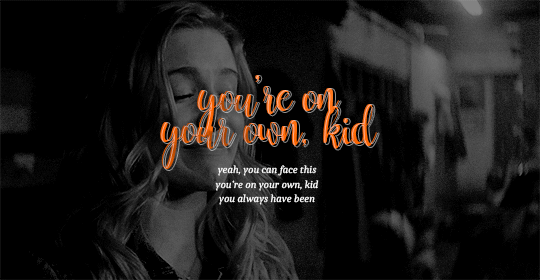



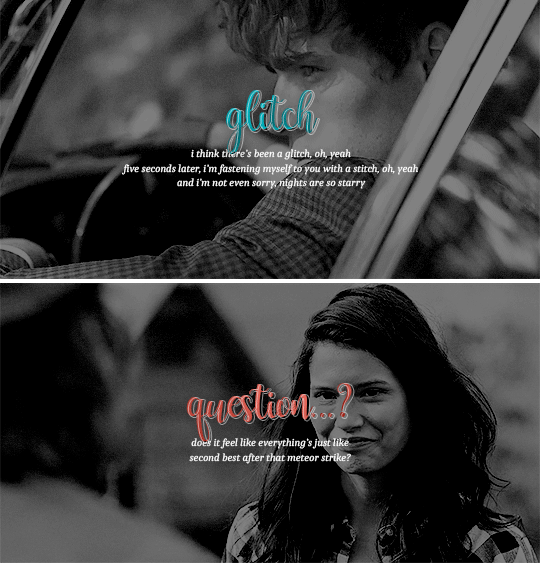



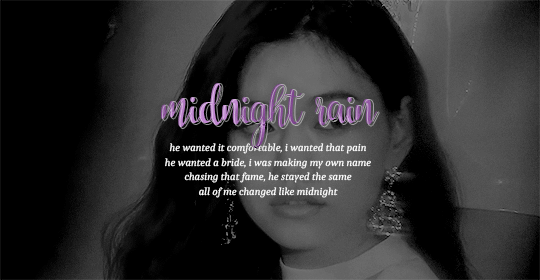
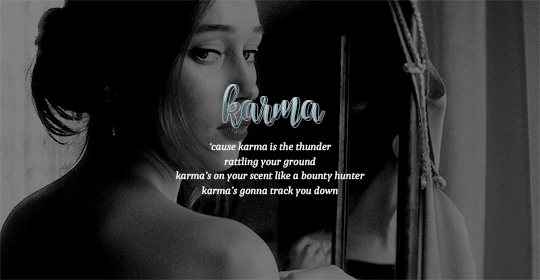
SANTA GUADALUPE CHARACTERS + ‘MIDNIGHTS’ LYRICS
jessica leão: you’re on your own, kid augusto porto dias: mastermind ana júlia sassaki moraes: anti-hero tiago mcgowan: paris nicolas marino: glitch olivia carrilho: question...? eduardo wang: labyrinth jennifer de silva: bejeweled guilherme sassaki moraes: sweet nothing ida pasquim: midnight rain diana brisbane: karma
#‹ mine › ━━━━ edits.#‹ universe › ━━━━ santa guadalupe.#‹ the revenant › ━━━━ ana júlia sassaki moraes.#‹ dynamic › ━━━━ aurameres e (triste) companhia.#stlupedit#lupets.
7 notes
·
View notes
Text
Resultado final rally Pioceora 2025
UTV Graduado
1-Roberto Keller\Roberto Spessatto-Can-am Maverick X3-153 PTS
2-Leonardo Selva\Antonio Modesto-Can-am Maverick X3-133 PTS
3-Lucas Alencastro\-Can-am Maverick X3-120 PTS
4-Eduardo e Maria Silva-Can-am Maverick X3-112 PTS
UTV Estreante
1-Augusto Rodriguez\Paulo Gonçalves-Can-am Maverick X3-149 PTS
2-Gillian Santos\Nodge Martins-Can-am Maverick X3-109 PTS
3-Rodrigo Ferreira\Luis Cunha-Can-am Maverick X3-99 PTS
4-Ronaldo Leal\Bruno Moraes-Can-am Maverick X3-53 PTS
0 notes
Text
Oi Luciano, como você está?
Não sei, estou feliz, mas ao mesmo tempo aflito, preocupado... mas a maior parte do tempo estou muito feliz e empolgado do que possa estar por vir.
Decidir começar a escrever aqui, não sei como isso vai acabar, mas decidir tentar expor meus sentimentos através de palavras escritas ao invés de expô-las ao vento, ou até mesmo em vão, as vezes tenho essa impressão.
Hoje foi um dia produtivo, foi meu dia de folga. Acordei, fiz o meu café como de costume: café; pão como ovo, hoje me dei ao luxo de comprar uns palitos de queijo kkk.
Depois, decidir tomar uma decisão que pode mudar a minha vida, precisei tomá-la, pois, sem brincadeira, está me arruinando (desculpe, não me sinto seguro, no momento, para revelar o que estou passando, fica entre mim e DEUS). Até o presente momento tenho conseguido, você pode estar se perguntando: oushi, mas só tem um dia dessa decisão! Pois é meus amigos, mas até então tem sido muito difícil.
Deus, ajude-me a conseguir conquistar todos os meus sonhos, objetivos, metas, esteja comigo, preciso de ti!
Fui marcar uns exames, sabe como é, para ter uma boa qualidade de vida, temos que ter uma boa saúde, inclusive, fui no mercado para comprar algumas coisas, porque pensa: tinha só besteira ou até mesmo nada na geladeira kkkk homem que mora sozinho é complicado, voltarei dia 27/02 para fazer esses axames.
Fui para a academia, hoje o treino foi muito bom! A academia sempre foi um lugar onde eu colocava meus pensamentos em ordem, onde eu me sentia bem, em paz, mas confesso que ultimamente eu tenho procastinado em ir, descobrir o voley na minha vida que também tem me ajudado bastante, mas decidir dar mais atenção a academia, tirei um dia de voley, não é fácil ter 35 anos kkkk não dá pra fazer tudo de uma vez. Prometo que esse ano serei mais dedicado.
Voltei pra casa , fiz meu almoço que, modéstia a parte, estava uma delícia, ta aí uma coisa que eu não sabia que fazia tão bem, quando fui morar sozinho, a princípio, cozinhava para sobreviver kkkk , agora eu invento cada receita que até Deus dúvida! Mas que fique entre a gente, pois a minha mãe nem sabe dessa habilidade, pois no dia que ela souber... rapaz, ela irá abusar de mim hahaha.
Descansei, li meu livro: Ansiedade: Como enfrentar o mal do século - Augusto Cury. Tenho gostado, voltarei quando conluir.
Agora estou aqui, escrevendo para vocês. Contando um poouco do meu dia a dia, espero que me ajude, pois sou um cara muito ansioso, preciso de algo que me desacelere, algo que aquiete meu coração e meus pensamentos acelerados...
0 notes
Text
Casa de Braga Netto foi palco de discussões sobre plano para matar Lula, Alckmin e Moraes
A trama golpista para assassinar o presidente Luiz Inácio Lula da Silva, o vice-presidente Geraldo Alckmin e o ministro Alexandre de Moraes, do Supremo Tribunal Federal (STF), envolvia os ex-ministros Walter Braga Netto, da Defesa, e Augusto Heleno, do Gabinete de Segurança Institucional (GSI), no comando de um “gabinete de crise”. A revelação consta no relatório da Polícia Federal, que…
0 notes